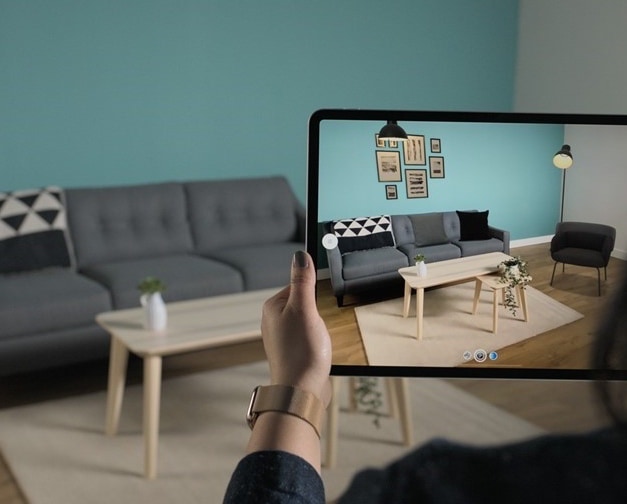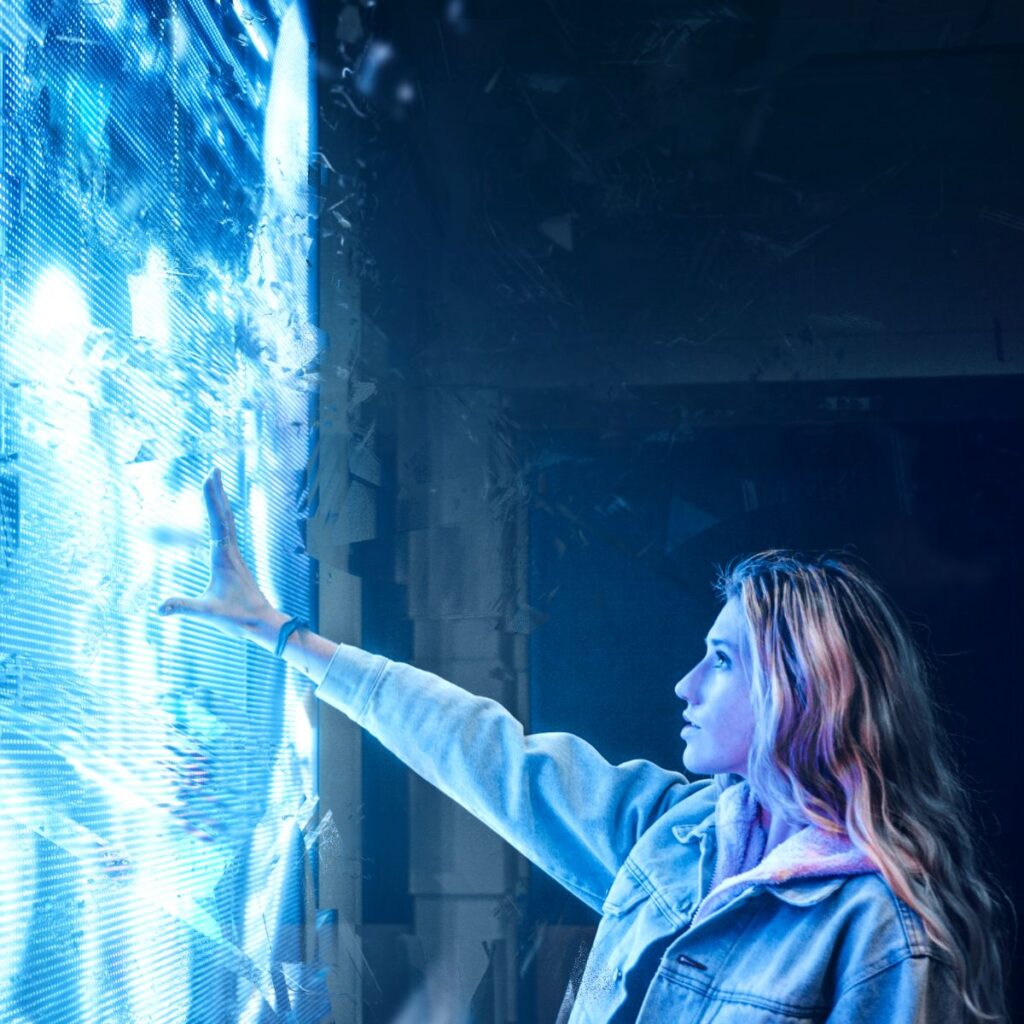So much of our lives today, exists online. We absorb information, develop relationships and purchase goods through the screens on our laptops, smartphones and other devices. For marketers, this means figuring out how to navigate social media, advertising and new platforms. A constant uphill battle to get their brands in front of customers.
The marketing industry is adaptable – it has to be. The speed at which new technology is introduced keeps marketers on their toes. Always looking for new ways to excite, delight and engage customers and fans. And the jump from Web2 to Web3 is no exception – with all of this new tech entering the scene, it’s hard to tell what’s a passing trend, and what’s here to stay.
For the past year, NFTs have been a huge part of this conversation. Marketers – and their audiences – are trying to figure out what exactly NFTs are. Are they a fad? How can they be used? And do they provide any real value? These are just a few of the questions on everyone’s mind.
It does appear that NFTs are here for the long-haul, because according to Business Insider, the NFT industry jumped to $41 billion dollars in 2021. That’s a leap that’s pretty hard to ignore. So, figuring out how to use them is going to be a big deal for brands in the coming years. And when we start to combine that new [and rapidly growing] technology with more established marketing tech like augmented reality (AR), we’re beginning to see the potential for what marketing in the metaverse is going to look like.
NFTs and Marketing
If you’re totally new to NFTs, here’s a quick rundown: an NFT (Non-Fungible Token) is a digital asset that represents an object or concept like art, music, a video, a certificate, or a key that gives the owner exclusive access to something. And while it seems odd that a digital object could hold as much value as something tangible, it’s actually not. Look back to the 1990s, when investors made a fortune buying up .com addresses and flipping them. Did they know what they were buying? And what they could be worth someday? Sort of, but not really.
It Takes a Future-Focused Mindset.
This is similar to what is happening with digital assets like NFTs today. People are buying up art, videos, memes, music, clothing and other items in the digital space. They don’t know exactly what the value of these things will be, but they are keen to participate in that evolution. This is a big deal for brands who are finding ways to create unique digital items to complement their physical offerings.
And while the potential for NFTs isn’t fully realized [yet], what is clear is that it’s a technology that can build in value over time. If you think about it, this isn’t much different than tangible items. Collectibles like Nike sneakers, vinyl records or Barbies, have all been around for decades. Over time, fans have collected these items because they liked the designs, artists, products, or brands. Like NFTs, they bought an asset to enjoy it. Some lost value, some retained it and some increased [in value]. Predicting that future has always been a bit of a guessing game though. With NFTs it probably won’t be any different.
But because of the digital nature of the asset, NFTs still feel so far removed from “real” or tangible items, so it’s taking consumers time to adapt to the idea of spending money on them. Industries like gaming with models like P2E (play-to-earn) are changing this mindset rapidly. In the meantime, the NFT industry continues to grow and it’s becoming increasingly hard to ignore. So how can marketers combine this new [seemingly invaluable] tech with more established tech options, to mediate this value disconnect? This is where AR comes in.
AR and Marketing
AR has become common in industries like home furnishing and cosmetics. Companies like IKEA have AR integrated into their app. It’s actually pretty cool. A customer can select a product from the catalogue [inside the app] and hold their phone up to the space in their home where they’d like to place that product. By using a digital version of a physical product, their customers can redesign their space(s) before making any actual purchase(s).
Kylie Jenner’s makeup brand also began integrating AR technology back in 2018, as a way for customers to virtually try on shades from her popular line of lipsticks. They did this using an AR filter which overlaid the color onto a user’s lips. Sort of a “try before you buy” tool, that doubled as a marketing engine when users began to add their filtered lipstick images to their Instagram stories.
Basically, AR allows brands to take tangible items in the physical space and make them feel real to users in the virtual space. And now that AR is seamlessly integrated into the user experience, most people don’t even notice that they’re using this advanced tech as part of their customer journey. So, how can we combine this [now, more familiar] tech with NFTs to get people even more engaged?

Using AR NFTs for the Ultimate Immersive Customer Experience
AR has already enabled a sort of rebuild of our perception of reality by combining items in the physical world, with those in our virtual space(s) to see how they integrate with one another. Up until now though, AR has been used as a way to “try” things that customers might purchase for their physical lives. So, how can NFTs enhance this experience?
Well, it’s simple. Instead of trying things, people are just buying things. Digital things that they can wear, share and use in their digital lives. If you think about it, this makes a lot of sense. We all spend a tremendous amount of time on our phones, laptops and tablets – playing games or cruising social media. Why would we not build our worlds within that space [the same way we do in our physical space]?
Right now, NFTs seem limited to jpegs, short videos or other types of media, so it’s hard to imagine anything beyond this for a lot of people. But NFTs are evolving quickly, and they’re finding their way into fashion, virtual property and other consumer spaces. By combining that tangible quality that AR has already familiarized users with, owners of NFTs begin to feel like their digital assets increase in value as they become more and more engaged in the virtual world.
Examples of How AR NFTs are Changing Industries
This exciting combination of technologies is finding its way into a number of industries. This is only going to expand as the possibilities for this combo evolves. It will become even more exciting as they begin to introduce other types of tech into the equation. Here are some examples of how industries are already combining AR and NFTs to enhance the user experience:
Art
The art NFTs currently being sold might seem strange as standalone items. However, when we start to integrate these pieces into larger contexts or environments, this will change. We’ll see this digital art can come alive using sounds, visual or other effects to enhance the experience. AR might even allow us to step into art, providing a completely new and immersive experience for the user. Imagine, not just looking at a Michelangelo, but stepping inside and actually experiencing one.
Gaming
The gaming world is turning into a lucrative space for players. Gaming has historically been focused on company profits, but now players are getting in on the action. The P2E (play-to-earn) model gives players the opportunity to make cash while they play games. Games are being built with their own micro economies embedded into them. This has players buying and selling assets throughout their gaming journey. Having NFTs or digital assets embedded into these economies, gives a documented reality for the players to establish themselves.
Fashion and Home Décor
We talked about how IKEA is using AR to help customers envision their products in their homes before buying them. Well, fashion companies are doing something similar by offering virtual change rooms. These allow customers to “try on” virtual clothes before buying them. And, with fashion NFTs emerging in the space, owning virtual versions of designer wear seems like the next obvious step.

Things to Consider When Creating AR NFTs for Your Brand
Utility is something to consider. Even if you don’t have one right away, it’s important to keep utility in mind when developing a brand-based NFT. What could the NFT be used for in the future? Access to pre-sales? Special Events? This doesn’t all need to be figured out before the release but having an idea about how your customers’ NFTs can be used someday, will be important moving forward. Utility adds value, and added value makes customers happy.
Use AR to sell your NFTs. Allow customers to try the products before they buy them. Giving your customers the opportunity to see how your virtual products will look on them, or in their environment(s) can help you sell your NFTs. This adds dimension and a sort of tangible feeling to your virtual product, making it feel more “real” for your customers before they even own those products.
Conclusion
The bottom line is that these two technologies are going to continue to evolve. Combined they will make items in the virtual space feel “real” and “valuable.” That’s because [in a sense] they will be. It’s hard to imagine now, but just like Web2 before us, there are things that will capture our attention, imagination and a significant portion of our lives awaiting us all in the metaverse. If you’re in marketing, the opportunity to capitalize on these possibilities is now.
Connect with us today to explore how we can build the metaverse together!!











